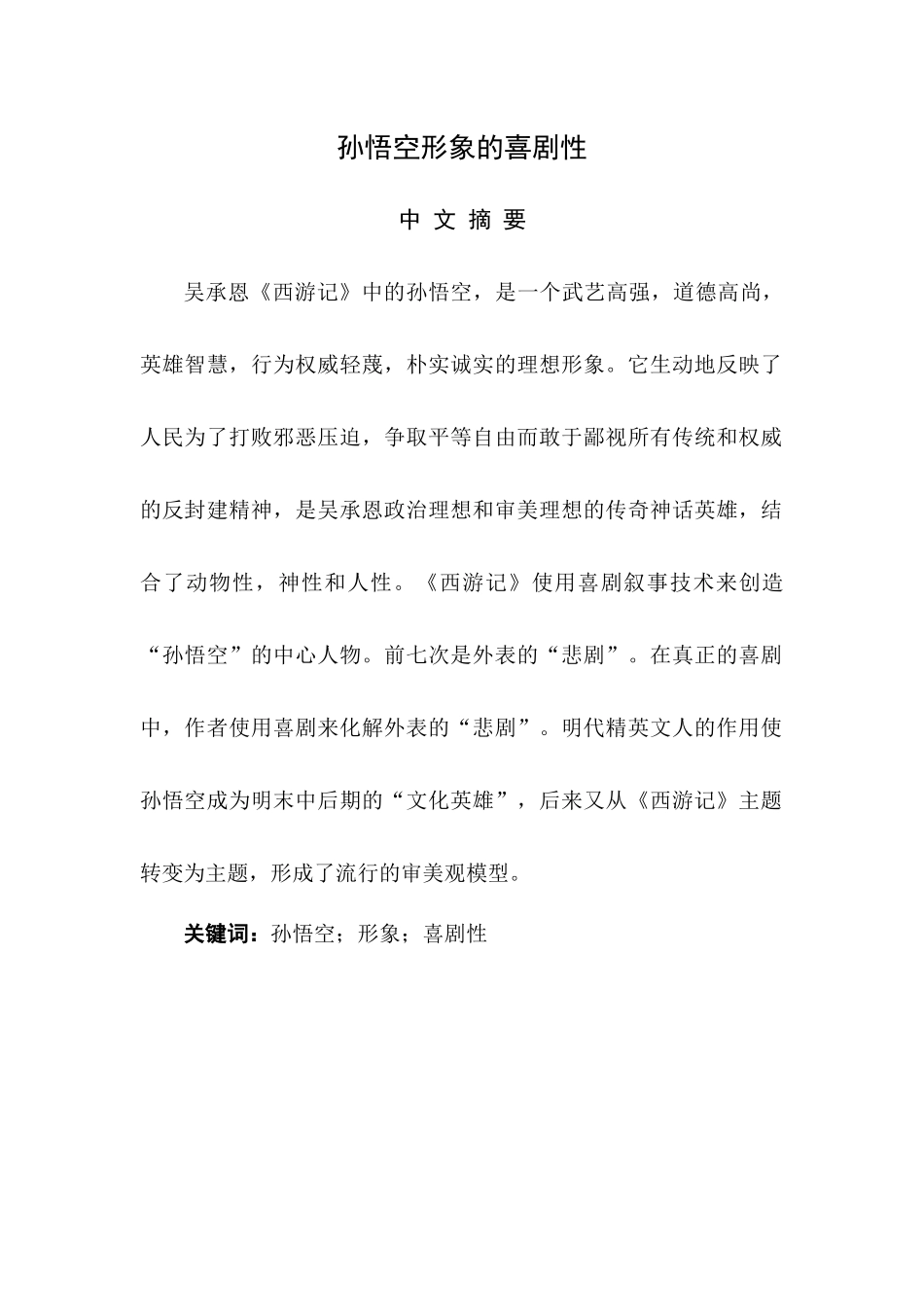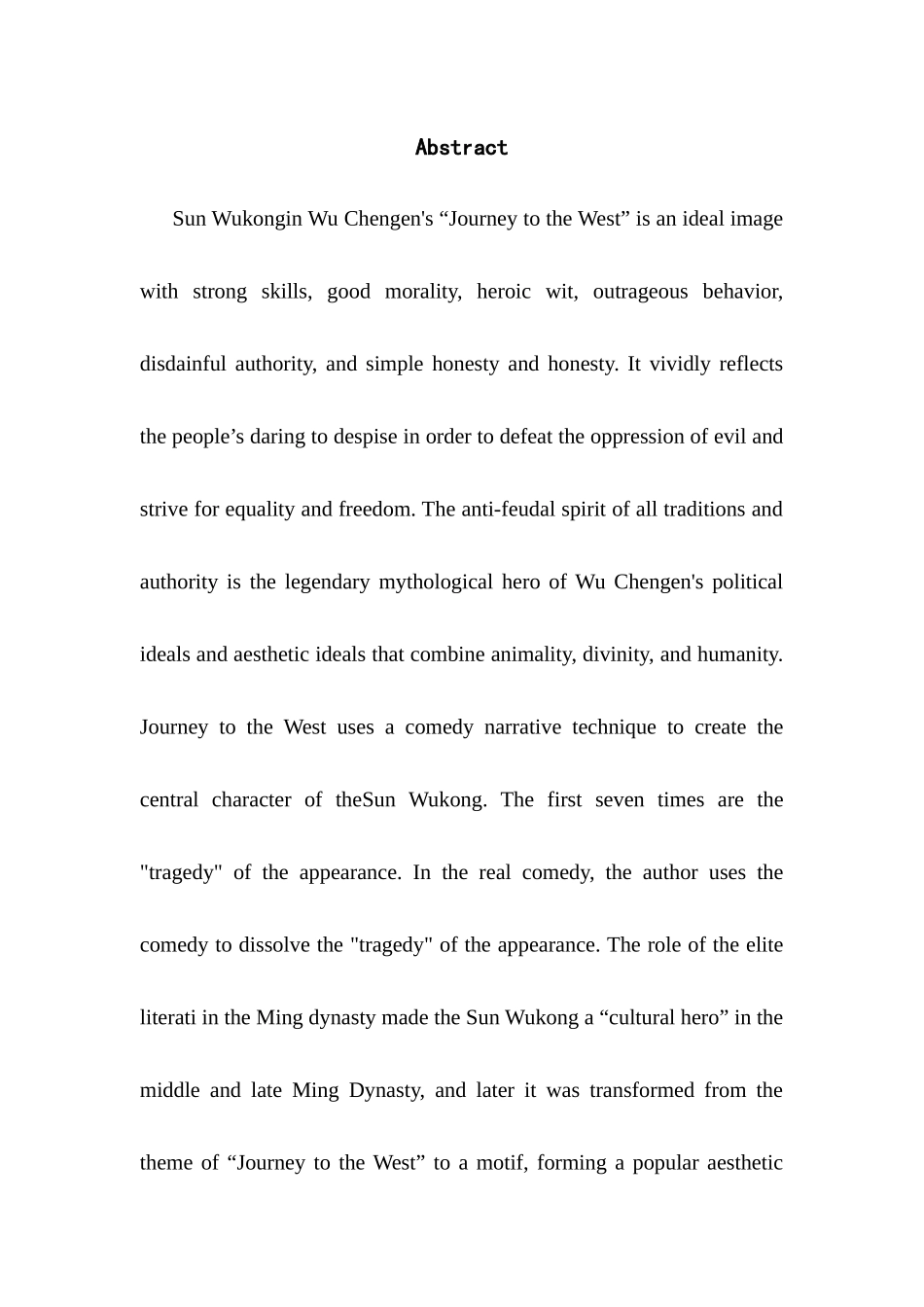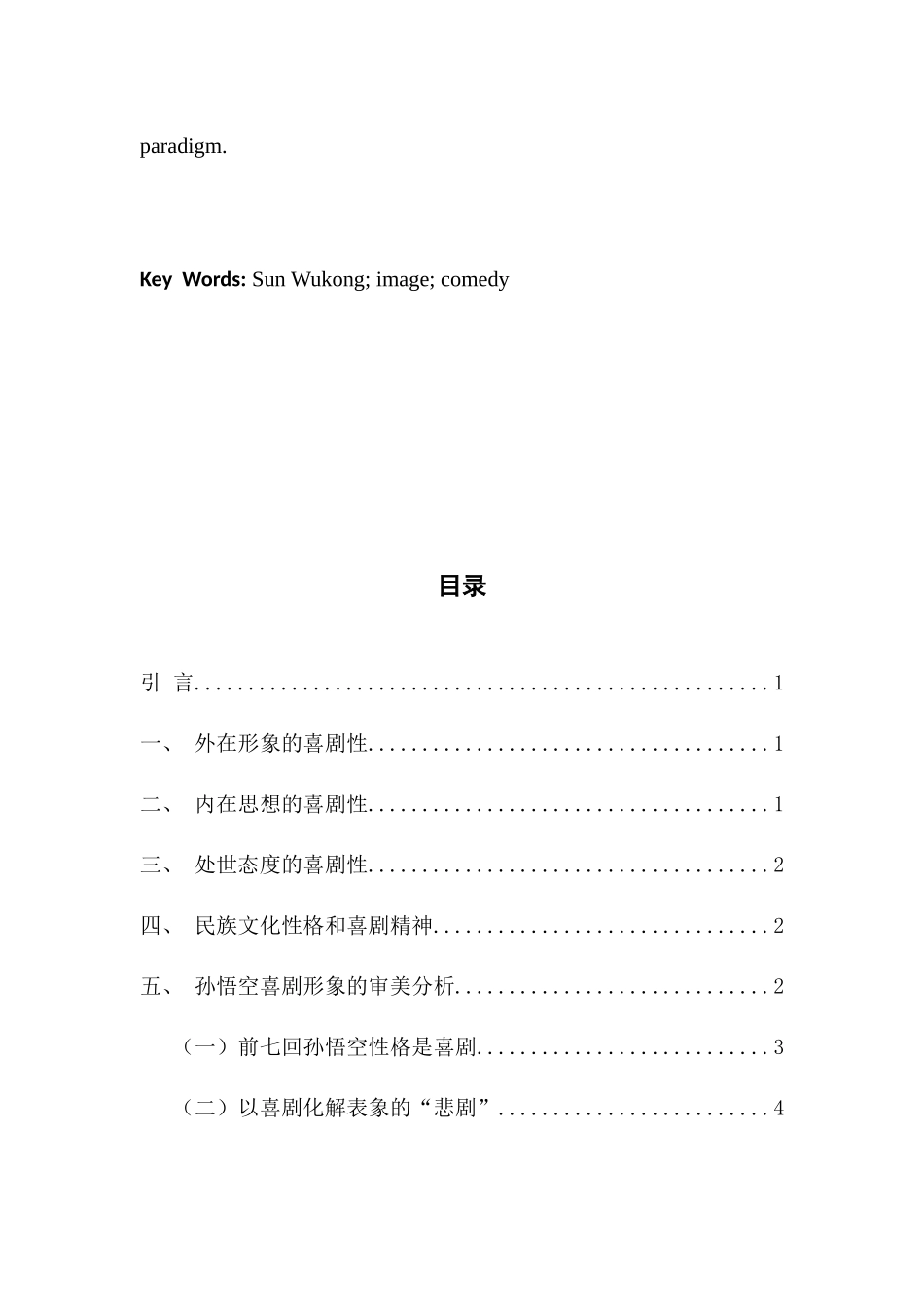孙悟空形象的喜剧性中 文 摘 要吴承恩《西游记》中的孙悟空,是一个武艺高强,道德高尚,英雄智慧,行为权威轻蔑,朴实诚实的理想形象。它生动地反映了人民为了打败邪恶压迫,争取平等自由而敢于鄙视所有传统和权威的反封建精神,是吴承恩政治理想和审美理想的传奇神话英雄,结合了动物性,神性和人性。《西游记》使用喜剧叙事技术来创造“孙悟空”的中心人物。前七次是外表的“悲剧”。在真正的喜剧中,作者使用喜剧来化解外表的“悲剧”。明代精英文人的作用使孙悟空成为明末中后期的“文化英雄”,后来又从《西游记》主题转变为主题,形成了流行的审美观模型。关键词:孙悟空;形象;喜剧性AbstractSun Wukongin Wu Chengen's “Journey to the West” is an ideal image with strong skills, good morality, heroic wit, outrageous behavior, disdainful authority, and simple honesty and honesty. It vividly reflects the people’s daring to despise in order to defeat the oppression of evil and strive for equality and freedom. The anti-feudal spirit of all traditions and authority is the legendary mythological hero of Wu Chengen's political ideals and aesthetic ideals that combine animality, divinity, and humanity. Journey to the West uses a comedy narrative technique to create the central character of theSun Wukong. The first seven times are the "tragedy" of the appearance. In the real comedy, the author uses the comedy to dissolve the "tragedy" of the appearance. The role of the elite literati in the Ming dynasty made the Sun Wukong a “cultural hero” in the middle and late Ming Dynasty, and later it was transformed from the theme of “Journey to the West” to a motif, forming a popular aesthetic paradigm.Key Words: Sun Wukong; image; comedy目录引 言.....................................................1一、 外在形象的喜剧性.....................................1二、 内在思想的喜剧性.....................................1三、 处世态度的喜剧性...........


